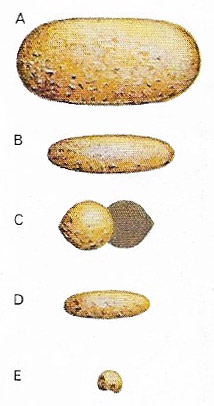microbe
A microbe is a unicellular organism so small that it can only be seen with the aid of a microscope. The term microbe is synonymous with microorganism.
Terrestrial microbes fall into the major categories of bacteria, archaea, and viruses. To a far greater extent than complex, multicellular organisms, they are capable of coping with and even prospering from environmental change and extremes. Their high surface-area-to-volume ratio allows rapid rates of chemical exchange with the surroundings, so that microbes can exploit favorable conditions. Moreover, their diverse biochemistry enables them to survive and flourish, as extremophiles, under what, to us, appear hostile regimes including environments that would have been common on the Earth at the time life first evolved (see Earth, early conditions).
The adaptability of microbes, their ability to take advantage of a wide range of conditions, and their ability to survive in unexpected places, such as tiny interstices in deep underground rocks, suggests that not only are microbes the commonest form of life in the universe but that they evolve on worlds wherever conditions remotely allow.
 |
| Microorganisms vary greatly in size. On the scale shown, a large filamented bacterium would be too large for the page, while the smallest virus would scarcely be visible. Microorganisms are typically measured in micrometers or microns. (A), (B), and (C) are cellular bacteria. Hemophilus influenzae (D) is a large bacterium and (E) is a mycoplasma, the smallest known free-living cell. |


